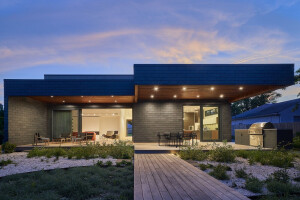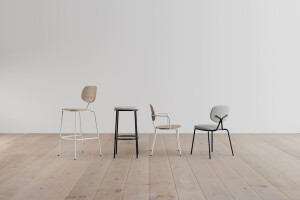The Area between Schanzen-, Spital-, Kleinbergstrasse and St. Johannesring is considered in urban terms, functionally and formally as a single entity. The new laboratory tower with its 70 meter height is placed in the centre of the campus and becomes the new symbol of identity.
The 15 story high tower will serve as an emblem for the university but with its size it is also an alien element within the structure of the city. The high rise building protrudes its neighbouring area by far – the placing of the building in the center allows the biggest possible set back to its surroundings as it is integrated within and creates an entity with the existing campus buildings. The service building on its front is a pavilion which forms a transition to the nearby park.
The program is distributed to three volumes. The tower has a public ground floor with a generous foyer which can be used by all students of the campus. Teaching rooms are located in the first two floors, above them are situated the laboratories. Technical rooms are on the top floor. The programmatic stack can be read on the exterior facade by the increasing proportion of openings towards the ground floor, as the functions of the building become more public in contrast to more closed areas on the higher floors.
A cafeteria, the data center, the covered ramp for delivery as well as the bicycle parking is located in the single story building. The facade has the same architectural language as the tower, but is layered horizontally, reinforcing – as with the verticality of the tower – its geometrical form.
In the third volume – which is located underneath the others – are big technical rooms, stocks as well as the areas for delivery and disposal within the building.
The facade with its narrow grid of open and closed glass parts, insulated aluminium cladding offers a strong recognition element to the building as at the same time it provides big flexibility for the layout of offices and laboratories on the inside.
Thanks to its compact volume, the building is, with its favourable ratio from volume to facade, and its insulated skin very ecological and sustainable.



























